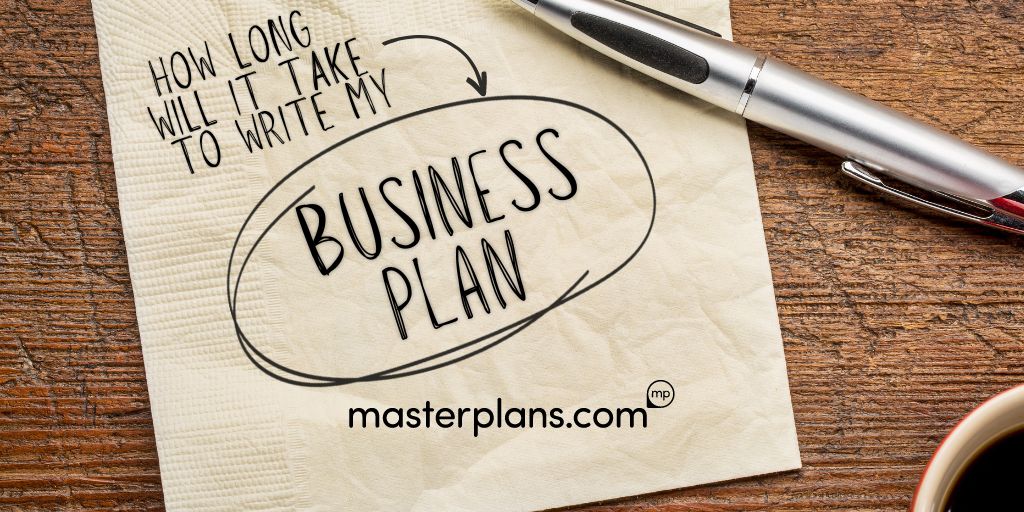How to Write a Management Summary for Your Business Plan
Entrepreneurs are often celebrated for their uncanny ability to understand others – their customers, the market, and the ever-evolving global...
8 min read
![]() Masterplans Staff
Aug 9, 2023 4:25:46 PM
Masterplans Staff
Aug 9, 2023 4:25:46 PM

You've been thinking about this for a decade. You are going to open the perfect coffee shop. You've worked at three different cafés in the last nine years (four if you include the one where they didn't have a POS and you only lasted a week). Your list of what-not-to-do is as long as your list of to-dos. You even have your eye on a spot with great sidewalk seating. You bought some rad chairs last month and have them stored in your cousin’s garage.
But you know that starting a coffee shop is expensive, and you’re going to need more money than you have saved. So the first thing you think to do is call your bank, and the first thing they ask you is if you have a business plan. You pause, and for a split second, you think to reply, “Yeah, my plan is to open a café.” But you're smarter than that, and you know that can't be what she's asking. “Um,” you say, formulating your thoughts, “I’m still working on the formal plan. Will I need that ready for next month’s meeting?” The banker says yes, and you start to sweat.
So after hanging up, you Googled “how long does it take to write a business plan,” and that brought you here. And now you’re waiting for us to get to the point and finally tell you the answer. First, take a deep breath. You got this.
Ok, ready?
Let’s start with a simple definition:
A business plan is a document that describes a company's objectives and its marketing, financial, and operational strategies for achieving them.
Depending on the needs of your business, the length of your plan (and the time needed to create it) will vary. But one thing is certain: your business plan should be written with the audience in mind, and the closer you are to opening your business, the more details and specifics they'll want to see.
A business plan should not only be a guide for you but also be a way for you to share your vision with others. And a business plan isn’t just for startups; it should be a living document that is flexible and can expand to meet your needs.
However, keep in mind that not every type of business plan is useful when it comes to obtaining a bank loan, but we'll get to that later. First, let's go over the four different kinds of business plans and what they're used for.
30 minutes to 1/2 day
1-2 Pages
This type of business plan is all about spontaneity and creativity. It's where the business owner jots down initial thoughts, market analysis, potential customers, and even a rough financial projection. It's a free-flowing brainstorming session that captures the essence of a business idea.
The Back-of-Napkin Business Plan thrives on spontaneity. Whether you're an aspiring small business owner or an experienced entrepreneur, this plan allows you to explore your business goals, target market, and competitive advantage without the constraints of a formal business plan format.
Capturing inspiration is vital for crafting a good business plan. It's about recognizing a good idea when it strikes and having the foresight to jot it down. This plan is not about detailed industry analysis or a polished executive summary. It's about the raw, unfiltered vision that could become a success story.
Writing a business plan is an iterative process. No one sits down the day they come up with a new business idea and just cranks out a full business plan. The Back-of-Napkin Business Plan is that beginning step. It may lead to a more solid business plan, complete with a company description, mission statement, business model, and company overview, or it may inform you what market research is necessary to pursue. But no matter what comes next, the Back-of-Napkin Business Plan is a stepping stone towards achieving your entrepreneurial dreams.
The audience for this plan is limited to yourself and perhaps a few trusted friends or family members. It's not meant for a potential investor or the Small Business Administration. It's a personal, intimate document that serves as a starting point for your business planning.
1/2 day to a week
4-5 Pages
The Lean Business Plan represents a significant step forward in the business planning process. It's more structured than the Back-of-Napkin Plan but retains a sense of flexibility and agility. This plan typically takes anywhere from half a day to a week to complete, depending on the complexity of the business idea.
At the heart of the Lean Business Plan is the Unique Value Proposition. This is where you define what your business is trying to accomplish, the problem it will solve, and who it will solve this problem for. It's a concise statement that encapsulates the essence of your business and sets it apart from competitors.
The Lean Business Plan is about setting clear goals, timelines, and metrics. It's a roadmap that guides you from where you are to where you want to be. It includes considerations for finances, potential competition, and strategies for finding your first customers.
Unlike more detailed plans, the Lean Business Plan thrives on flexibility. Bullet points, simple charts, and concise language make it a living document that can adapt to changes and new insights.
The Lean Business Plan helps you articulate your business idea in a more formal way. It's about getting the idea out on paper, exploring how much money you'll need, where you could get those resources, and how you'll find your target market.
Share your plan with someone you trust, like a friend or family member, to gain perspectives and enhance collaboration. The more collaboration, the better the plan becomes.
Once you have your Lean Business Plan, it becomes a perfect tool to share your vision with possible business partners. It gives you a sense of what you know, what you need to know, and the next steps to take.
This plan is meant for a broader audience than the Back-of-Napkin Business Plan, including potential partners, advisors, and as an internal strategy document. It's a tool to share your vision and gain insights from others.
A week to 2 weeks
10-12 Pages
The LeanPlus Business Plan is a document that combines clarity and conciseness with a high-level overview of the business, including simple financials. This plan is designed to be presented to landlords, pre-seed investors, vendors, and partners. But how long does it take to write a business plan of this nature? The time consideration for the LeanPlus Business Plan ranges from a week to two weeks.
The LeanPlus Business Plan emphasizes clarity and conciseness. It provides a high-level executive summary and includes a simple Profit & Loss Statement. Unlike the Lean Business Plan, the LeanPlus Business Plan should be a narrative document with key headers for organization. It's a document that's prepared for an outside party to read, offering a clear and concise overview of the business idea, target market, and financial projections.
This plan offers a high-level overview of the business, addressing key aspects such as the problem or opportunity, product or service features, marketplace, target customers, revenue model, and management team. It's a snapshot of the business that provides essential information without delving into excessive detail.
The financial aspect of the LeanPlus Business Plan is simplified, focusing on expected revenue, Cost of Goods Sold, and key expenses like marketing, rent, and utilities. However, it's worth noting that for pre-revenue companies, especially those in a development phase like SaaS, the financial forecast may not include revenue forecasting at all. Instead, they may opt for a cash burn analysis, which measures the rate at which the company spends its cash reserves, or a burdened cash flow analysis, which provides a comprehensive view of how money will be spent over time, including all associated expenses.
At some point during the business planning process, you will almost certainly need to present your vision to outsiders. The LeanPlus Business Plan serves this purpose, providing a more professional document that offers a general overview of the business. It's a tool for sharing your vision and securing support from key stakeholders.
The creation of the LeanPlus Business Plan is a professional endeavor. It requires careful consideration of the content, structure, and presentation. The LeanPlus Business Plan bridges the gap between the initial ideation and the detailed Traditional Business Plan. It's a document that reflects the entrepreneur's evolving understanding of the business, the market, and the path to success. It's a tool for communication, collaboration, and progress, aligning with the goals of the business owner and the expectations of potential investors and partners.
The LeanPlus Business Plan is tailored for landlords, pre-seed investors, vendors, and partners. It's a document that conveys the essence of the business without overwhelming the reader with complexity. It's suitable for presenting to stakeholders who have a vested interest in the company's success but don't require exhaustive detail.
1 month to 12 months
40 to 60 pages
The Traditional Business Plan is the most comprehensive and detailed of all business plans. It's the tool you need when you want to confidently convince someone to share their money with you, and it's also useful for setting key goals and tracking your progress as your business grows.
The Traditional Business Plan is characterized by its thoroughness. It covers a lot of the same topics as the Lean and LeanPlus Business Plans but in much more detail. It requires meticulous market research and citation, adhering to an established business plan outline.
This plan includes a full financial projection, with a detailed five-year revenue forecast and key financial statements such as the Balance Sheet and Profit & Loss Statement. It's a comprehensive financial plan that provides potential investors, banks, and other stakeholders with a clear understanding of the business's financial forecast. A full financial model typically comprises 12-15 pages of the document.
The Traditional Business Plan is a comprehensive document that requires careful planning and consideration. It's not merely a written document but a strategic roadmap for the business. This plan demands a deep understanding of various aspects, including the industry, the target customer (and a marketing strategy for reaching them), and a full competitive analysis that includes a profile of each key competitor and your competitive advantage.
Creating a Traditional Business Plan is an iterative and time-consuming process. It's not something that can be done in one sitting. Instead, it requires continuous drafting, thinking, re-writing, researching, and re-thinking.
The Traditional Business Plan is typically employed to solicit funding for startups from banks and investors. It also plays a crucial role in various government applications, such as petitioning the USCIS for entrepreneurship visas or applying for specific licensing, such as in the cannabis industry. While all Traditional Business Plans are well-researched and written in a professional manner, it's essential to recognize that each audience has distinct needs that must be addressed. This customization ensures that the plan resonates with the specific stakeholders, aligning with their expectations and requirements.
Planning is the backbone of a successful business, serving as a bridge that aligns vision with reality. It transforms ideas into actionable strategies, guiding entrepreneurs through the multifaceted journey of starting and growing a business. Whether a fleeting sketch or a comprehensive Traditional Business Plan, proper planning harmonizes all aspects of the business, defining competitive advantages, shaping marketing strategies, and forecasting financial needs.
Creating a business plan transcends mere time constraints. It's not about plugging your information into a business plan template; it's about capturing the essence of the business idea, analyzing the market, and devising robust strategies. The emphasis is not on the hours and days but on the depth and breadth of understanding required to lay a solid foundation for the business.
Business plans are complex, and entrepreneurs don’t have to go it alone. Professional business planners like Masterplans provide expertise in aligning vision with reality and transforming ideas into actionable strategies. We serve as invaluable sounding boards, allowing entrepreneurs to refine their ideas with experienced insights.
A good business plan writer can take your ideas and tailor them to the specific needs of diverse audiences, whether investors, lenders, or government agencies like USCIS. It's a collaborative process that goes beyond mere document-creation.
A business plan is not a static document but a living guide that evolves with the business. It must be revisited and updated regularly to reflect changes in the market, goal-setting, and strategies to reach those goals. This continuous journey ensures alignment with the dynamic landscape of business, reinforcing the plan's role as an essential tool for sustained success.

Entrepreneurs are often celebrated for their uncanny ability to understand others – their customers, the market, and the ever-evolving global...

Despite growth in sectors like artificial intelligence, venture capital funding has seen better days. After peaking at $347.5 billion in 2021, there...

Most people think of a professional business plan company primarily as a "business plan writer." However, here at Masterplans, we choose to approach...